How to Create AI-Generated Images


Get ready to unlock the secrets behind AI image generation. We'll explore the best tools, techniques, and platforms available, providing you with the knowledge and resources to bring your imagination to life. Along the way, we'll address common challenges and misconceptions surrounding AI-generated images.
Whether you're seeking inspiration for your next project, looking to expand your creative horizons, or simply curious about the possibilities of AI art, this guide is your gateway to an exciting and revolutionary world. So, let's roll up our sleeves and embark on this thrilling journey of creating AI-generated images together!
- How to Create AI-Generated Images with PhotoDirector
- Top 3 Tools to Create AI-Generated Images
- What is an AI Image Generator?
- Best Practices for AI-Generated Image Prompt Writing
- Challenges of AI-Generated Images
- Misconceptions about AI-Generated Images
- AI-Generated Images FAQ
How to Create AI-Generated Images with PhotoDirector
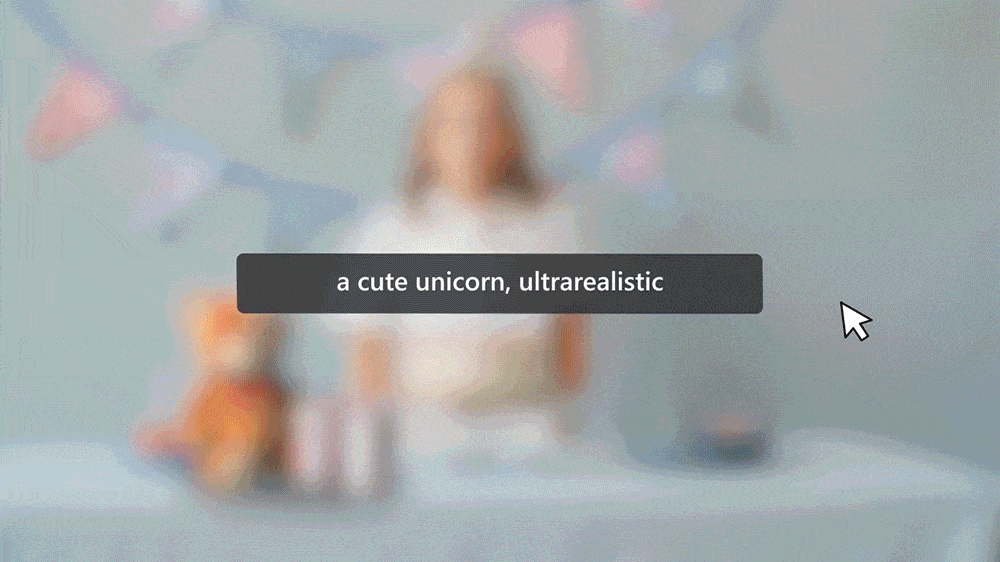
PhotoDirector, the ultimate photo editing application, combines advanced AI technology with a user-friendly interface, providing you with a seamless and intuitive experience. Whether you're a professional looking to enhance your creative work or a hobbyist eager to experiment with AI, PhotoDirector has got you covered.
Follow these steps to create AI-generated images in PhotoDirector.
- Download PhotoDirector for free.
Download from the App Store for iOS and Android.
- Install PhotoDirector and open Edit mode.
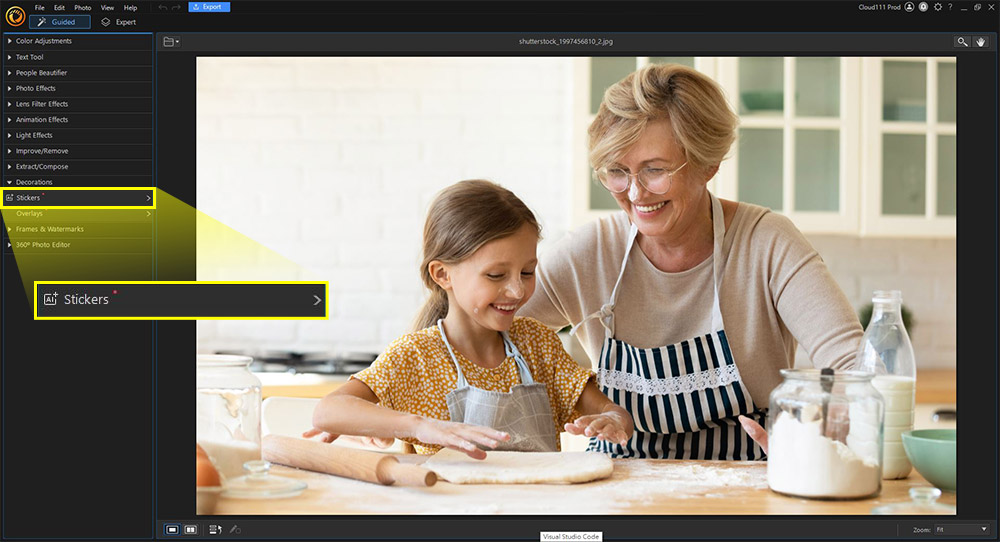
- Under Guided open Decorations and Stickers.
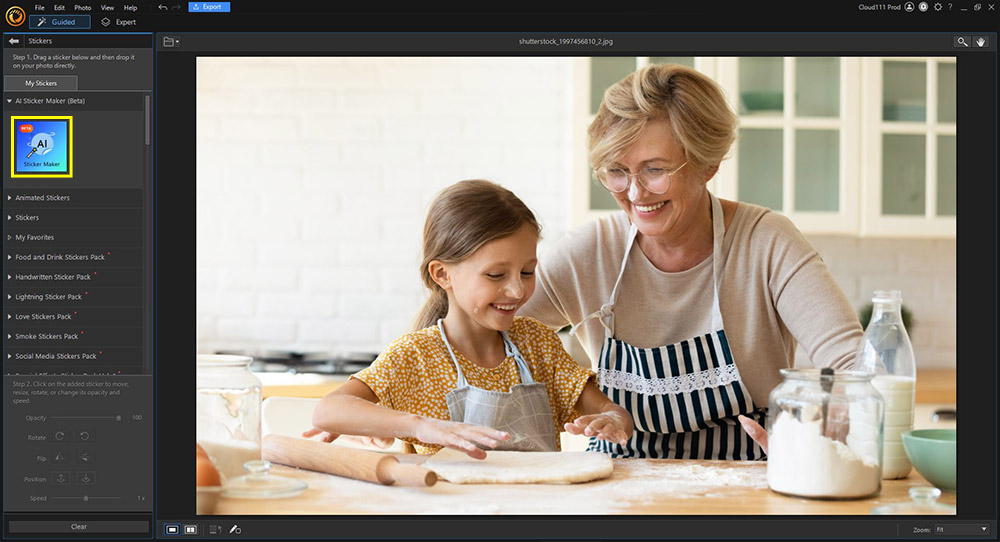
- Open AI Sticker Maker.
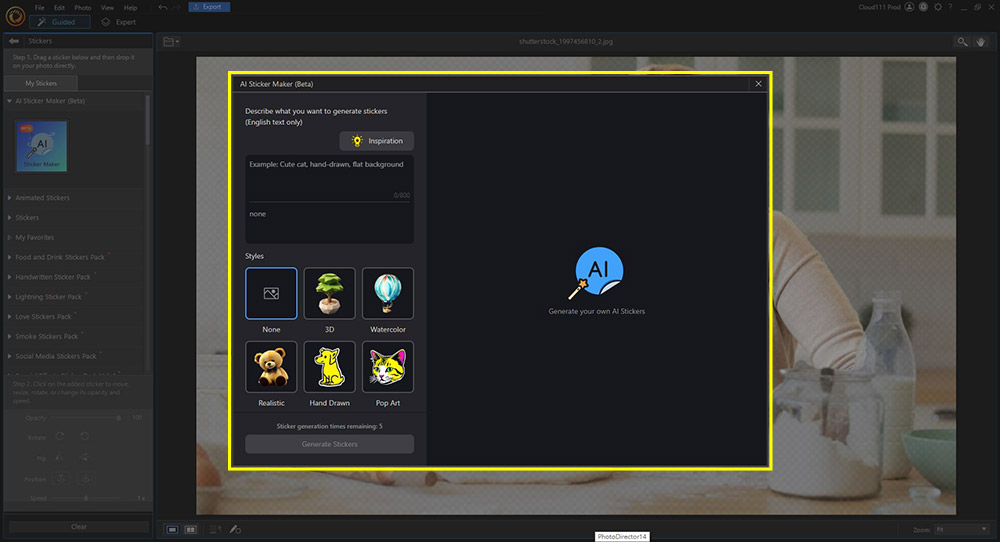
- Type what you want to see and select a style.
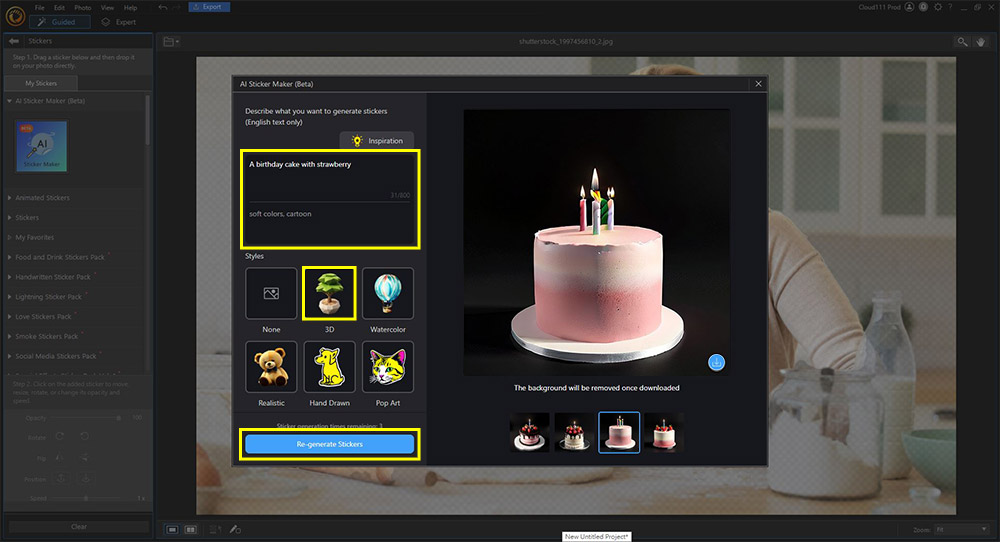
- Generate Stickers and download the ones you like.
Top 3 Tools to Create AI-Generated Images
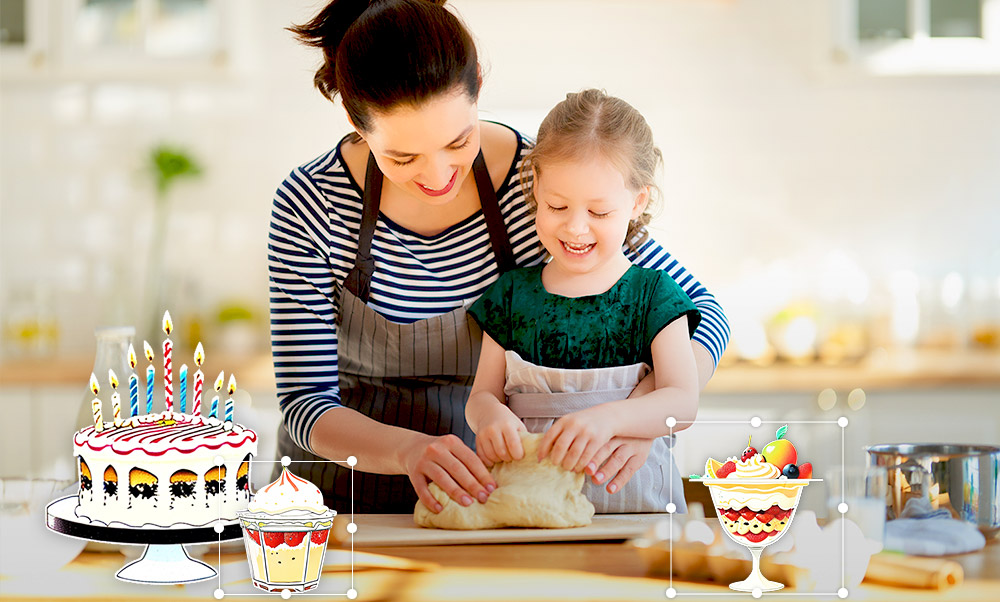
1. PhotoDirector - Best Photo Editor to Create AI-Generated Images
Let me introduce you to PhotoDirector—it's like having a creative superpower in your pocket! With its AI Sticker Generator, you can turn text into stunning stickers using mind-blowing AI-generated images. The best part? You get to choose from a wide range of styles like sketch, filmic, 3D, and anime. It's sticker-making made easy!
But wait, there's more! PhotoDirector isn't just your ordinary photo editing app—it's a total powerhouse! It combines the best features of Adobe Lightroom and Photoshop, giving you pro-level editing tools right at your fingertips. Adjust layers, masks, text kerning—you name it, PhotoDirector's got it!
Now here's where the magic happens—PhotoDirector goes above and beyond with cutting-edge AI-powered abilities. You can do crazy style transfers, remove stuff magically, swap out boring skies, mask out people, and even create mind-blowing GIF animations. Your creations will be pure wizardry!
So don't waste another second—hit that download button and experience the mind-blowing fusion of AI technology and photo editing prowess with PhotoDirector's AI Sticker Generator. Unleash your inner artist, create captivating stickers, and take your content to new heights. Trust me, the possibilities are endless with PhotoDirector's awesome suite of tools and AI-powered capabilities. Get ready to bring your wildest imaginations to life like never before!
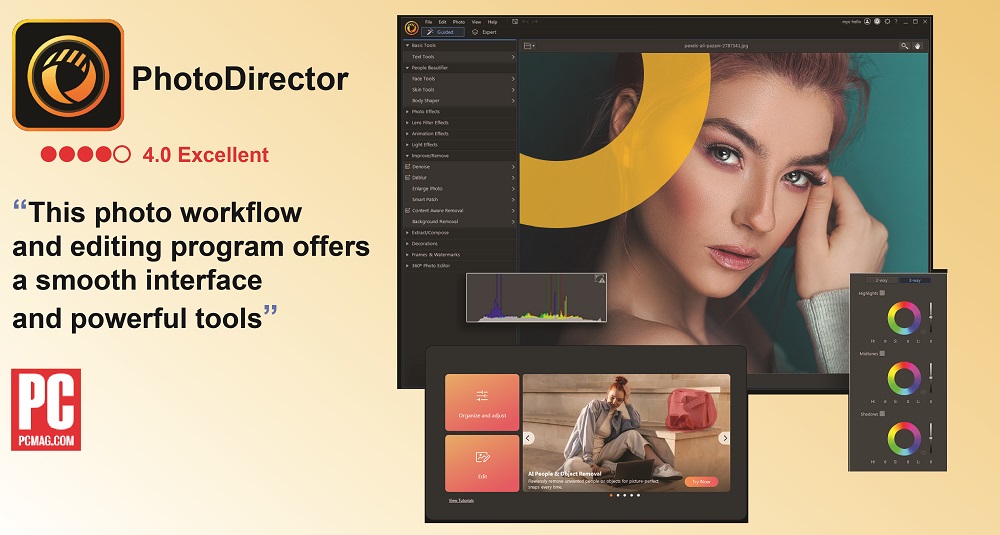
2. Midjourney - Best AI-Generated Images for High-Quality Results
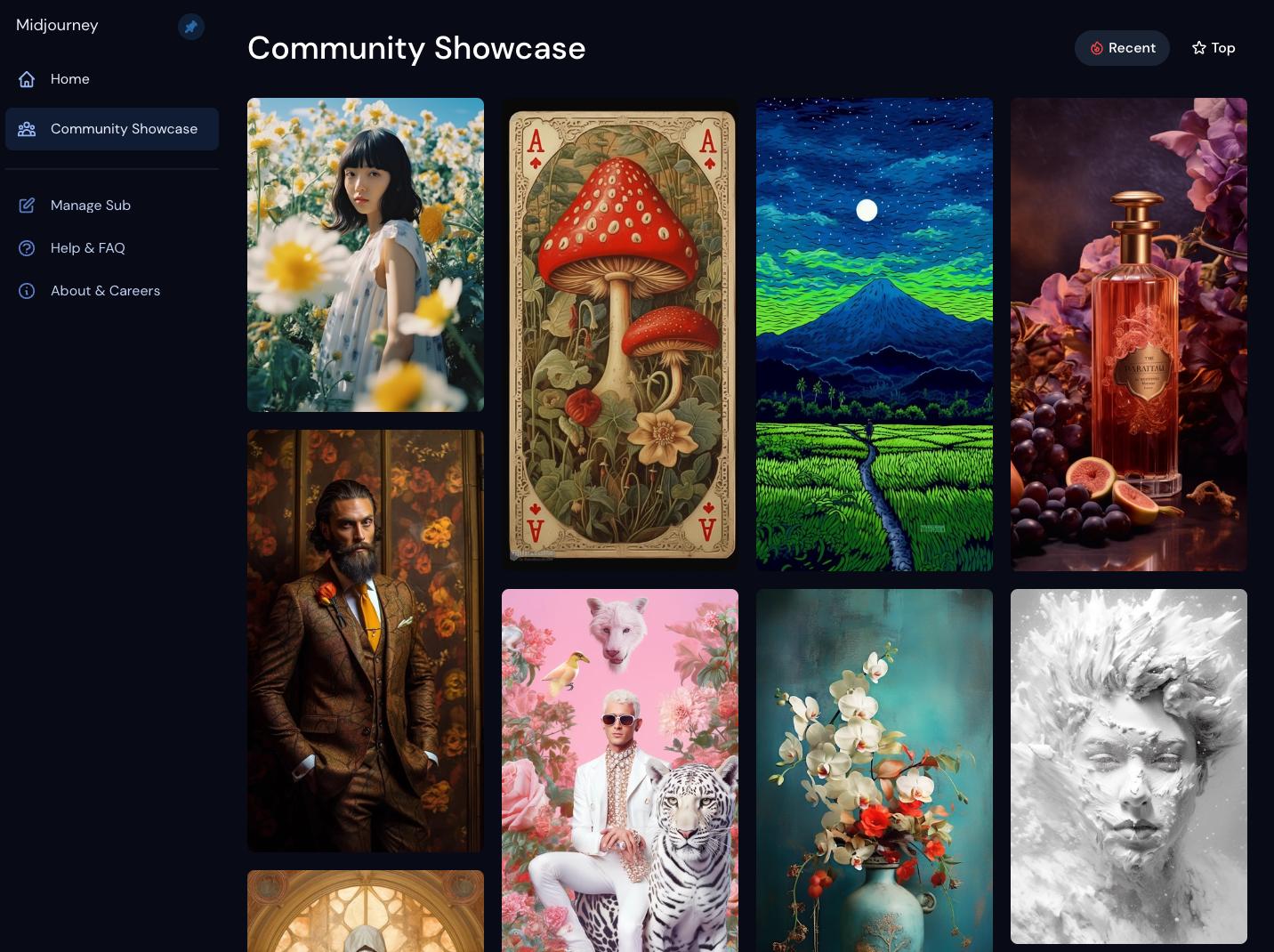
Midjourney stands out as an AI image generator, consistently delivering top-notch results with cohesiveness, rich textures, and vibrant colors. Compared to other generators, Midjourney's visuals are highly captivating and visually appealing, making it a winner in the realm of AI-generated images. Its impressive ability to create lifelike and natural representations of people and real-world objects without complex instructions further solidifies its position as the first AI image generator to win an art competition.
However, it's crucial to note that Midjourney is accessible exclusively through Discord. To utilize it, joining Midjourney's Discord server or inviting the Midjourney bot to your own server is necessary. Once inside, a simple "/imagine" command followed by your desired prompt will initiate the magic, producing four variations for you to explore, download, upscale, and edit as desired.
Here's the important aspect to be aware of—by default, every image generated through Midjourney is publicly shared within its Discord community. While this communal aspect may be appealing to some, it also means that anyone interested can view your creations. Privacy concerns or business-related usage of Midjourney may require careful consideration of this aspect.
In summary, Midjourney delivers exceptional results, but the exclusive use of Discord and public sharing of generated images should be taken into account. Assessing your specific needs and priorities is essential before delving into the Midjourney experience.
3. DALL·E 2 - Best for Ease of Use When Making AI-Generated Images

DALL·E 2 has made a significant impact in the world of AI image generators, and it's easy to understand why. It gained widespread attention as the first AI-powered generator to produce mind-blowing images that went viral. While being the first doesn't always guarantee being the best, DALL·E 2 has undeniably earned its reputation.
One of the standout features of DALL·E 2 is its remarkable ease of use. By simply signing up for a free OpenAI account, users can effortlessly generate AI-generated images. Just type in your desired prompt and click the Generate button, and within seconds, you'll have four awesome image options to choose from. If you're familiar with OpenAI's ChatGPT, you'll find the interface familiar since it's built by the same team.
In addition to the web app, OpenAI offers an API, which is particularly exciting for developers who want to integrate DALL·E 2 into their own applications. This means you can connect DALL·E 2 to tools like Zapier, enabling automation such as generating images from Google Forms or HubSpot responses. The possibilities are endless, even allowing for automated art inspiration. How amazing is that?
Pricing Comparison Chart
| Software | PhotoDirector | Midjourney | DALL·E 2 |
|---|---|---|---|
| Best For | Photo Editing | High-Quality Results | Ease of Use |
| Price | $3.33/month | $8/month | $15/115 credits |
What is an AI Image Generator?
An AI Image Generator is a computer program or system that uses artificial intelligence techniques, such as deep learning algorithms, to generate images autonomously. It leverages machine learning models trained on vast amounts of data to learn patterns, styles, and visual representations. By analyzing and understanding the data, an AI Image Generator can produce new images based on given inputs or prompts.
AI Image Generators can create a wide variety of images, including realistic photographs, paintings, abstract designs, and even novel visual concepts. They can generate images from scratch based on textual descriptions, modify existing images, or combine different visual elements to create something entirely new. These generators are designed to mimic human creativity and provide a powerful tool for artists, designers, and anyone interested in visual content creation.
The underlying AI models in these generators can learn from large datasets of images, enabling them to capture intricate details, textures, and styles. With advancements in deep learning and neural networks, AI Image Generators continue to improve, producing increasingly realistic and high-quality images. They have revolutionized various industries, including art, design, entertainment, and advertising, offering new avenues for creativity and visual expression.
Best Practices for AI-Generated Image Prompt Writing
AI art prompts typically follow a specific structure that includes several common elements. First, you begin with the image content or subject, describing the action, state, and mood. For example, you might describe a cat on a sofa or a city at sunset. Adding vivid details and separating different elements with commas helps the AI model interpret your prompt accurately.
Next, you can include the art form, style, and artist references to guide the AI model towards a specific aesthetic. This could be photography, painting (with techniques, art movements, or artist names), illustration, digital art, film stills, or other art forms. Mixing and matching these elements can lead to unique and interesting results.
Additionally, you have the option to add more details to your prompt, such as framing, lighting conditions, color schemes, and the desired level of detail or realism. Mentioning specific techniques like close-up shots or lighting styles like soft or hard light can influence the composition and atmosphere of the generated image. Playing with color schemes and specifying levels of detail, like "4k" or "8k," can further refine the output.
Remember to experiment with the structure, length, and style of your prompts as you gain more experience. The AI image generators interpret prompts differently based on their training and configuration. So, let your creativity flourish and be amazed by the remarkable results you can achieve.
Challenges of AI-Generated Images
There are a number of challenges when creating or using AI-generated art. Some of these challenges include:
- Copyright and ownership: There is currently no clear consensus on who owns the copyright to AI-generated images. Some argue that the artist who created the AI program owns the copyright, while others argue that the person who generated the image owns the copyright. This lack of clarity can make it difficult for artists to protect their work and earn a living from it.
- Bias: AI programs are trained on large datasets of human-created content, which can introduce bias into the art that they generate. For example, an AI program that is trained on a dataset of paintings by male artists may be more likely to generate paintings that depict male figures. This bias can be harmful, as it can perpetuate stereotypes and exclude certain groups of people from the art world.
- Reproducibility: AI-generated images are often difficult to reproduce, as it is based on the output of a complex algorithm. This can make it difficult for artists to sell their work or to create derivative works.
- Creativity: Some people argue that AI-generated images are not truly creative, as it is simply the result of a computer program following a set of instructions. Others argue that AI-generated images can be creative, as it can generate new and unexpected images that a human artist would not have created.
- Despite these challenges, AI-generated images are a rapidly growing field with the potential to revolutionize the art world. As AI programs become more sophisticated, they will be able to generate more complex and original art. This could lead to a new era of creativity and innovation in the art world.
Misconceptions about AI-Generated Images
There are many misconceptions about AI-generated art, some of which include:
- AI images are not original. AI images can be original, but it is often based on existing data that the AI has been trained on. This means that AI images can sometimes look similar to other pieces of art, but it can also be completely new and unique.
- AI images are not creative. AI images can be creative, but it is often limited by the data that it has been trained on. This means that AI images can sometimes be repetitive or predictable, but it can also be innovative and unexpected.
- AI images are not valuable. The value of AI images is subjective and depends on the individual buyer. Some people believe that AI images are not valuable because a human does not create them, but others believe that AI images are valuable because they are unique and innovative.
- AI images are not personal. This means that AI images can sometimes lack the personal touch of human-created art, but it can also be a collaborative effort that reflects the ideas and creativity of multiple people.
It is important to remember that AI images are a new and evolving field. As AI technology continues to develop, AI images will likely become more original, creative, valuable, and personal
AI-Generated Images FAQ
The legality of AI-generated images is a complex and evolving issue. In the United States, works created solely by AI are generally not eligible for copyright protection, as they are not considered the product of human creativity.
However, there may be exceptions if human input or creative contribution is involved in the process. Other countries may have different laws and regulations regarding AI-generated images and their copyright status. As AI technology advances, legal frameworks are being reviewed and adapted to address these novel challenges.
Regarding lawsuits, there have been some legal cases related to AI-generated images. For example, in January 2023, a group of artists filed a class-action lawsuit against the company DALL-E Mini, alleging copyright infringement. The artists claimed that their original artworks were used to train the AI model without proper authorization or compensation. The outcome of this specific case is still pending, but it highlights the potential legal implications and disputes that may arise in the realm of AI-generated images.
The controversy surrounding AI-generated images primarily revolves around questions of authenticity, ownership, and the impact on human creativity. Some of the key points of contention are:
- Authenticity: AI-generated images raise debates about what constitutes original and authentic artwork. Critics argue that true creativity and artistic expression should be exclusive to human artists, questioning the legitimacy of AI-generated art as genuine artistic creations.
- Displacement of Human Artists: There are concerns that as AI technology advances and becomes more sophisticated, it may lead to the displacement of human artists. If AI-generated images become more prevalent and accessible, it could potentially devalue the work and livelihoods of traditional artists.
- Copyright and Ownership: The question of ownership and copyright surrounding AI-generated images is complex. Determining who holds the rights to AI-generated artwork can be challenging, especially when AI models are trained on existing copyrighted works. There are ongoing discussions about how copyright laws should be adapted to address these new forms of creation.
- Attribution and Authorship: AI-generated images blur the lines between authorship and attribution. It can be difficult to attribute credit to the human creators, AI developers, or the dataset used to train the AI model. This raises ethical questions about giving proper recognition and acknowledgment to the individuals or entities involved in the creative process.
- Ethical Use and Bias: AI algorithms are trained on existing datasets, which can inadvertently perpetuate biases present in the data. This raises concerns about the potential for AI-generated images to reinforce and amplify societal biases, leading to issues of representation and fairness in the generated artwork.
As AI-generated images continue to evolve and become more prevalent, these controversies highlight the need for ongoing discussions, ethical guidelines, and legal frameworks to address the challenges and implications of this emerging form of artistic expression.



![How to Screen Record on Android [Step by Step Guide]](https://dl-file.cyberlink.com/web/content/b906/Thumbnail.jpg)

